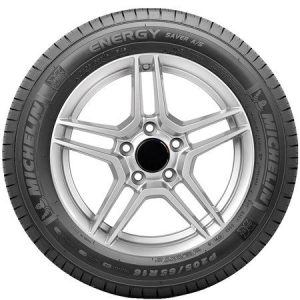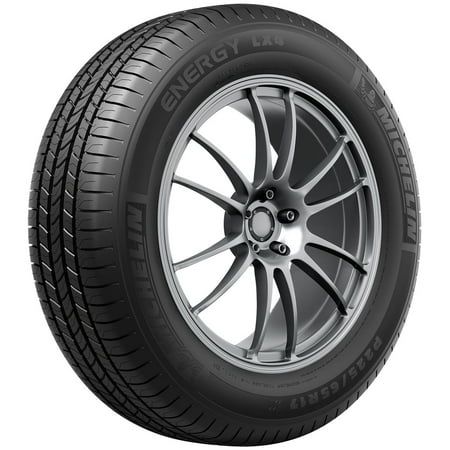Continental tires grace the wheels of countless vehicles worldwide, renowned for their performance, handling, and safety features. But a crucial question lingers in the minds of drivers: how long do Continental tires last? Unfortunately, there’s no one-size-fits-all answer. This comprehensive guide delves into the factors influencing Continental tire lifespan and equips you with valuable tips to maximize the miles you get from your Continentals.
The Tire Odyssey: A Journey Influenced by Many Factors
Several elements play a part in determining a tire’s lifespan. Understanding these factors empowers you to make informed decisions that extend the life of your Continental tires:

-
Tread Depth Takes Center Stage: The most critical factor is tread depth. Tires feature grooves that channel water away from the contact patch, ensuring grip on wet roads. As tires wear down, these grooves become shallower, compromising traction and increasing the risk of hydroplaning. Legally mandated minimum tread depth varies by region, but most experts recommend replacing tires when the tread reaches 4/32 inches of remaining depth.
-
Driving Habits Can Steer You Wrong: Aggressive driving habits like frequent acceleration, hard braking, and sharp cornering accelerate tread wear. Conversely, a smooth and steady driving style translates to longer tire life. Consider these factors when navigating the open road.
-
Road Conditions: Friend or Foe? Rough roads riddled with potholes and debris can inflict damage on tires, causing uneven wear or punctures. Regular highway driving generally translates to less wear and tear compared to navigating city streets with constant stop-and-go traffic. Be mindful of the road you travel.
-
Climate Can Be a Curveball: Extreme weather conditions can impact tire life. Hot climates can accelerate tread wear, while cold temperatures stiffen the rubber compound, reducing grip and potentially leading to cracking. Understanding your climate can help you choose the right Continental tires.
-
Maintenance Matters Most: Proper tire maintenance plays a vital role. This includes maintaining correct tire pressure (refer to your owner’s manual or the placard on the driver’s side door jamb), regular tire rotations (typically every 5,000 to 7,000 miles), and wheel alignments to prevent uneven wear. A little TLC goes a long way.
Continental Tire Warranties: Decoding the Coverage

Continental offers a variety of tire warranties, but it’s important to understand that these warranties typically cover defects in materials and workmanship, not tread wear life. The specific warranty terms will vary depending on the tire model you purchase. Consult your warranty paperwork or contact Continental for details. Don’t rely solely on warranty coverage to determine replacement needs.
Warning Signs: When Your Continental Tires Cry for Help
Ignoring the signs of worn or damaged Continental tires can compromise safety. Here are some telltale indicators that your Continentals are nearing the end of their lifespan:
-
Tread Wear Indicators Tell the Tale: Most Continental tires have built-in tread wear indicators (TWI) – small bars molded into the base of the tread grooves. When the tread surface wears down to the level of these bars, it’s time to replace the tires. Don’t wait until the bars are completely gone.
-
Reduced Traction on the Road: Do you feel your car slipping or sliding more than usual, especially on wet roads? This could be a sign of worn tires with insufficient tread depth. Reduced traction increases stopping distances and creates a hazardous driving experience.
-
Uneven Wear Paints a Concerning Picture: Uneven tread wear patterns can indicate improper inflation, alignment issues, or worn suspension components. Uneven wear significantly reduces tire lifespan and can compromise safety. Address the underlying cause to prevent further problems.
-
Visible Tire Damage Demands Attention: Bumps, bulges, cracks, or cuts on the tire sidewall are cause for immediate concern. Driving on a damaged tire is dangerous and can lead to a blowout. Replace damaged tires promptly to ensure safety.
Never ignore these warning signs. Replacing worn or damaged Continental tires is an investment in your safety and the safety of others on the road.
Extending the Journey: Maximizing Mileage on Your Continental Tires
By following these practices, you can get the most out of your Continental tires:

-
Maintain Proper Tire Pressure: Check your tire pressure regularly (at least once a month and before long trips) and adjust according to the manufacturer’s recommendations. Underinflation is a major contributor to uneven wear and reduced tire life. A tire pressure gauge is a valuable tool for any driver.
-
Rotate Your Tires Regularly: Regular tire rotations help distribute wear more evenly across all four tires, extending their lifespan.
-
Rotate Your Tires Regularly: Regular tire rotations help distribute wear more evenly across all four tires, extending their lifespan. Consult your owner’s manual or a trusted mechanic for the recommended tire rotation interval for your car. Consistent rotations ensure all tires wear at a similar rate.
-
Practice Smooth Sailing: Avoid aggressive driving habits like rapid acceleration, hard braking, and sharp cornering. A smooth and steady driving style promotes even tread wear and extends tire life. Be mindful of your driving habits to maximize tire lifespan.

-
Align Your Wheels for Optimal Performance: Proper wheel alignment ensures all four tires make contact with the road surface at the optimal angle. Misalignment leads to uneven wear and reduces tire life. Get your wheels aligned as recommended by your car manufacturer or whenever you experience a significant bump or pothole. Wheel alignment keeps your tires tracking properly.
-
Store Tires Properly for Off-Season Use: If you remove your Continental tires for seasonal changes, store them properly in a cool, dry place out of direct sunlight. Improper storage can accelerate tire degradation. Taking care of your tires during storage extends their lifespan.
A little preventive maintenance goes a long way in maximizing the life of your Continental tires. By following these simple steps, you can enjoy optimal performance, safety, and value from your Continentals for miles to come.
The Continental Choice: Invest in Performance, Safety, and Longevity

-
All-Season Tires: Providing year-round versatility and reliable performance in various weather conditions.
-
Performance Tires: Engineered for superior handling and responsiveness, ideal for driving enthusiasts.
-
Touring Tires: Designed for long highway journeys, offering a balance of comfort, handling, and treadwear.
-
SUV/Truck Tires: Built for the demands of SUVs and trucks, delivering durability, strength, and off-road capability (where applicable).
-
Winter Tires: Specifically designed for winter weather conditions, providing superior traction and grip on snow and ice.
Don’t wait until your tires are worn out – invest in a set of Continental tires today and experience the difference in safety, performance, and long-lasting value!
